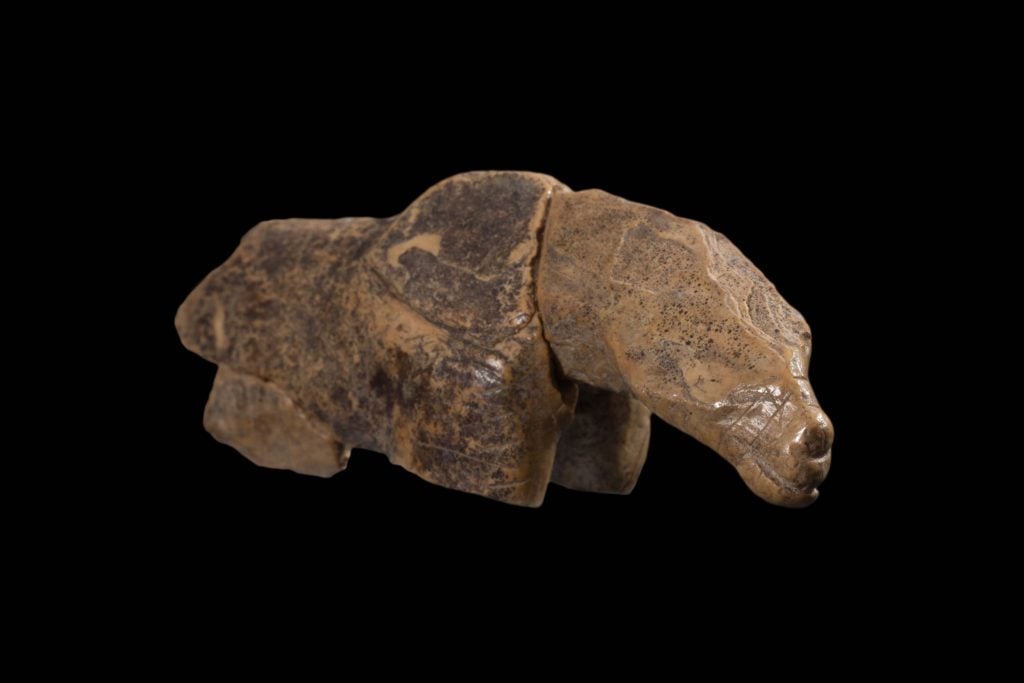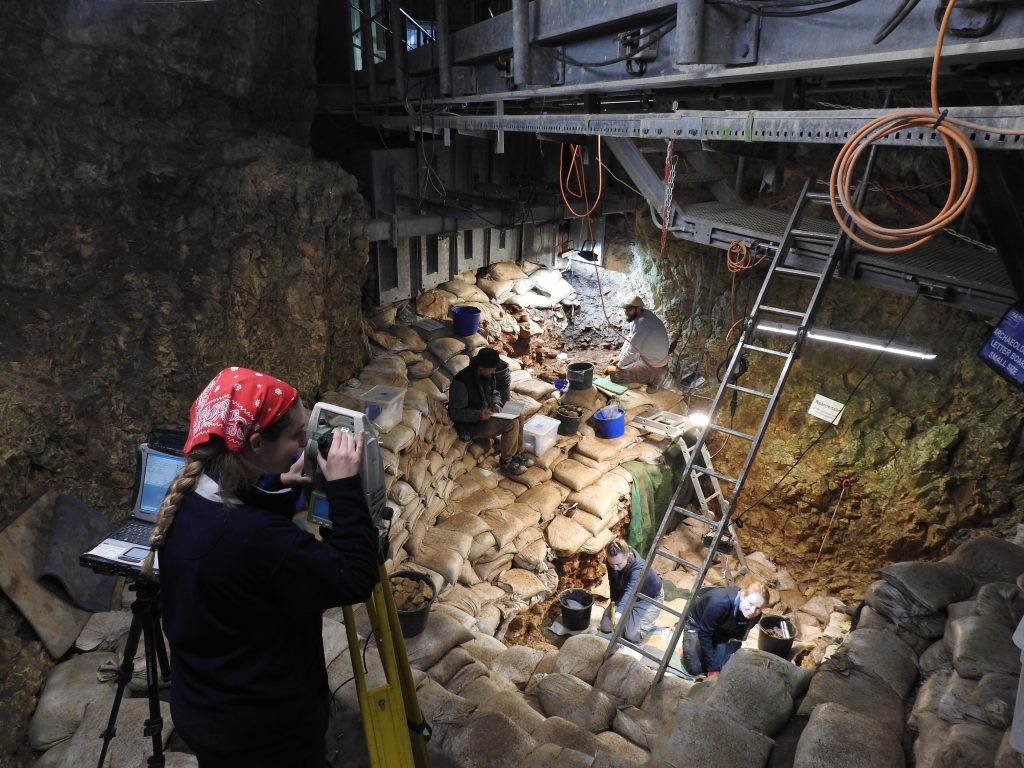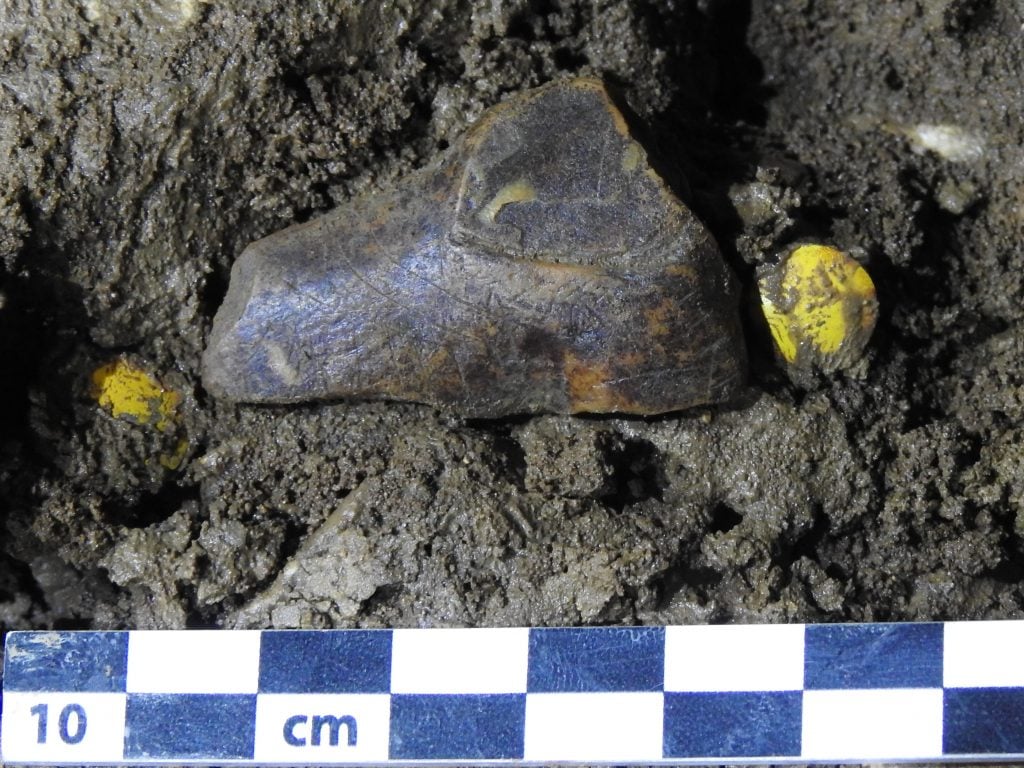Archaeology & History
Yea or Neigh? Researchers Once Thought This Ice Age Figurine Depicted A Horse—New Discoveries at the Same Site Tell A Different Story
Archaeologists have found several further fragments belonging to the prehistoric sculpture.

Archaeologists have found several further fragments belonging to the prehistoric sculpture.

Artnet News

In 1999, archaeologists digging in the Hohle Fels cave, in Germany’s Swabian Jura mountain range, discovered a fragment of an Ice Age carved figurine. It was the first ivory sculpture to be pulled from the caves and researchers deemed it a representation of a horse’s head. But recent excavations at that same site have uncovered new segments of the figurine that are throwing that earlier interpretation into question.
Measuring about 1.5 inches-long, the 1999 find features a finely rendered snout, with line patterns on one side, which researchers have identified as the animal’s right shoulder.

An overview of the 2022 excavations at Hohle Fels 2022. Photo: Nicholas J. Conard. © Universität Tübingen.
Since 2022, a research team from the University of Tübingen have been revisiting Hohle Fels, intent on unearthing other portions of the sculpture. They found a number of ivory fragments, among which were pieces with line engravings and finishings that could be matched to the original ivory figurine. They include a small piece on the right side of the sculpture’s body, another that could be a portion of its left front leg, and a smaller piece that is part of its torso.
Once the old and new fragments were assembled, the sculpture presented a “new shape,” according to a recent news announcement shared by the university, that looked less like a horse than previously thought. The Ice Age figurine is now made up of five segments that were found over the years—from the original 1999 discovery and a small cheek fragment that was discovered some years later, as well as the latest additions.

The animal figure as seen from the right front. Photo: Ria Litzenberg. © University of Tübingen.
“We still cannot identify the animal species depicted with certainty, but it could be a cave lion or a cave bear,” said Nicholas Conard from the university’s Department of Prehistory and Quaternary Ecology, who led the excavation.
“The figurine now has a massive body, shows the typical pronounced bear hump at shoulder height, and presents itself in a posture that could imitate the trotting gait of a bear.”
The figurine is now on view at the Museum of Prehistory Blaubeuren in Germany, joining other finds from the Hohle Fels, including the Venus of Hohle Fels, the earliest-known depiction of the human form.

A fragment of the figurine in its find location. Photo: Alexander Janas. © University of Tübingen.
“This figure, said Stefanie Kölbl, the museum’s managing director, of the newly reconstituted sculpture, “shows us and our visitors that archaeological work is never finished.”
“It is by no means easy to identify Ice Age depictions with certainty, especially when they are preserved in such fragmentary form,” said Conard. “It therefore makes sense to look extra carefully for the missing parts of this animal in the years to come.”
More Trending Stories: